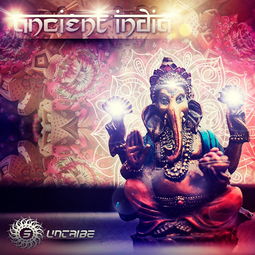
Ancient India Om: A Multidimensional Journey Through Time
Ancient India, often referred to as the “land of the Vedas,” is a treasure trove of history, culture, and spirituality. The “Om,” a sacred sound and symbol, is deeply intertwined with the fabric of Indian heritage. Let’s embark on a detailed exploration of this fascinating subject.
The Origin of Om

The “Om” is considered the primordial sound from which the universe emerged. It is often depicted as a three-part symbol, representing the past, present, and future. The origins of the “Om” can be traced back to the ancient Vedas, the oldest sacred texts of Hinduism, which are believed to have been composed around 1500-1000 BCE.
The Symbolism of Om

The “Om” is a powerful symbol with numerous meanings. It is often associated with the following:
-
The universe: Om is considered the sound of the universe, representing its creation, sustenance, and destruction.
-
The divine: It is believed that Om is the sound of the divine presence, and reciting it can bring one closer to the divine.
-
The self: Om is also associated with the individual soul, representing its journey towards enlightenment.
The Role of Om in Hinduism

In Hinduism, the “Om” holds a central place in religious practices and rituals. It is often chanted during prayers, meditation, and other spiritual practices. The following are some key roles of Om in Hinduism:
-
Prayer: Om is chanted at the beginning and end of prayers, signifying the invocation and conclusion of the divine presence.
-
Meditation: Om is used as a mantra in meditation, helping practitioners focus their minds and achieve spiritual awareness.
-
Yoga: Om is often chanted during yoga practices, promoting inner peace and balance.
The Cultural Significance of Om
The “Om” is not only a religious symbol but also a cultural icon in India. It is found in various forms, such as:
-
Art and architecture: Om is depicted in intricate designs on temples, sculptures, and other religious artifacts.
-
Textiles: Om patterns are woven into fabrics, creating beautiful and meaningful garments.
-
Personal items: Om is often inscribed on jewelry, watches, and other personal items, serving as a reminder of its spiritual significance.
The Scientific Perspective of Om
In recent years, scientists have been exploring the potential benefits of the “Om” sound. Some studies suggest that the sound may have the following effects:
-
Reduces stress: The repetitive nature of Om chanting can help calm the mind and reduce stress levels.
-
Improves concentration: Focusing on the sound of Om can enhance concentration and mental clarity.
-
Enhances well-being: Regular practice of Om chanting may lead to improved overall well-being and a sense of peace.
The Global Impact of Om
The significance of the “Om” has transcended the boundaries of India and Hinduism. It has become a symbol of peace and spirituality worldwide. The following are some examples of its global impact:
-
Interfaith dialogue: Om is often used as a unifying symbol in interfaith dialogues, representing the shared values of peace and spirituality.
-
Yoga and meditation: Om is a central part of yoga and meditation practices worldwide, helping people connect with their inner selves.
-
Art and music: Om has been incorporated into various forms of art and music, spreading its message of peace and spirituality.
Conclusion
The “Om” is a powerful symbol that encapsulates the essence of ancient Indian heritage. Its significance in Hinduism, culture, and spirituality is undeniable. As we continue to explore the depths of this sacred sound, we are reminded of the timeless wisdom and beauty that ancient India has to offer.
| Year | Event |
|---|





